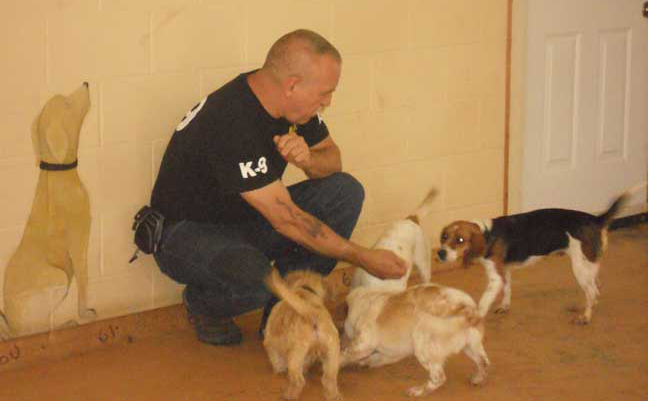This segment continues the process of evaluating detector dogs. This time we’ll focus on food-rewarded dogs.
(Editor’s note: Read Part 1 – How to choose a dog for scent detection, Part 2 – Tips to evaluate a dog for scent detection and Part 3 – How to evaluate a detector dog for toy drive)
First, let’s get something straight about one of the biggest misconceptions out there regarding food-rewarded dogs: you cannot starve a dog into being a good detector dog. Hunger can be a motivating factor for any animal, but if the dog doesn’t know what to do to get the food, depriving it of nutrition will do nothing other than present a hazard to its health. An empty stomach can motivate a food dog, but if you are one of the few trainers or handlers that believes starving a dog is a part of training, you should find another line of work. If the dog doesn’t know what to do to get the food, what sense does that make?
One more thing: the assertion that food-rewarded dogs will just “sit down to eat” is asinine when considered from an animal behavior perspective. This usually comes from trainers and handlers of toy-rewarded dogs, who know little about training and handling a food-rewarded dog. The assertion is based on the fact that the dog wants to eat so badly that it will false alert to get the treat. These trainers also imply that toy-rewarded dogs are higher drive than those rewarded with food. If the toy-rewarded dog is higher drive, as implied by these trainers, isn’t it reasonable to assume that a toy dog is then more likely to “just sit to get the toy”?
The key to success with training food-rewarded dogs is to choose the right dog to begin with. So let’s talk about how to do that.
Once I’ve chosen a dog, based on its sociability and self-confidence, I then will present a reward to measure the dog’s desire to get whatever I’m offering. If the dog tries to get at a piece of food I’m holding, just out of reach, I’ll toss it into the kennel to see how the dog scrambles after it. I’ll toss a piece maybe behind its house or blanket to evaluate whether the dog will hunt for the treat until it finds it. After a few throws, I may fake tossing a piece of food. This will give you an idea of how motivated the dog is to hunt for the food.
To start the food drive evaluation, I’ll take the dog into a room with at least some furnishings for the test. First, I’ll toss several pieces of food on the floor, while the dog watches and allow the dog to scramble after them, catch and eat them. Next, I’ll toss a piece of food under a piece of furniture that the dog can crawl under. Does the dog readily scramble under to get the food? Does the dog stick its nose under, maybe paw frantically trying to get the food?
Next, toss one on top of something that the dog will have to jump onto to get the food. Then toss one on top of something that is too high for the dog to jump up onto. What I like to see with a dog, when the food is on a surface that is too high for it to access, is whether he looks at me for help after realizing that he cannot get the food on his own.
If we’ve found a dog that passes the tests, let’s train that bed bug dog.
David Latimer is founder of the World Detector Dog Organization, online at WDDO.org. He can be reached at latimer_david@yahoo.com.

Leave A Comment